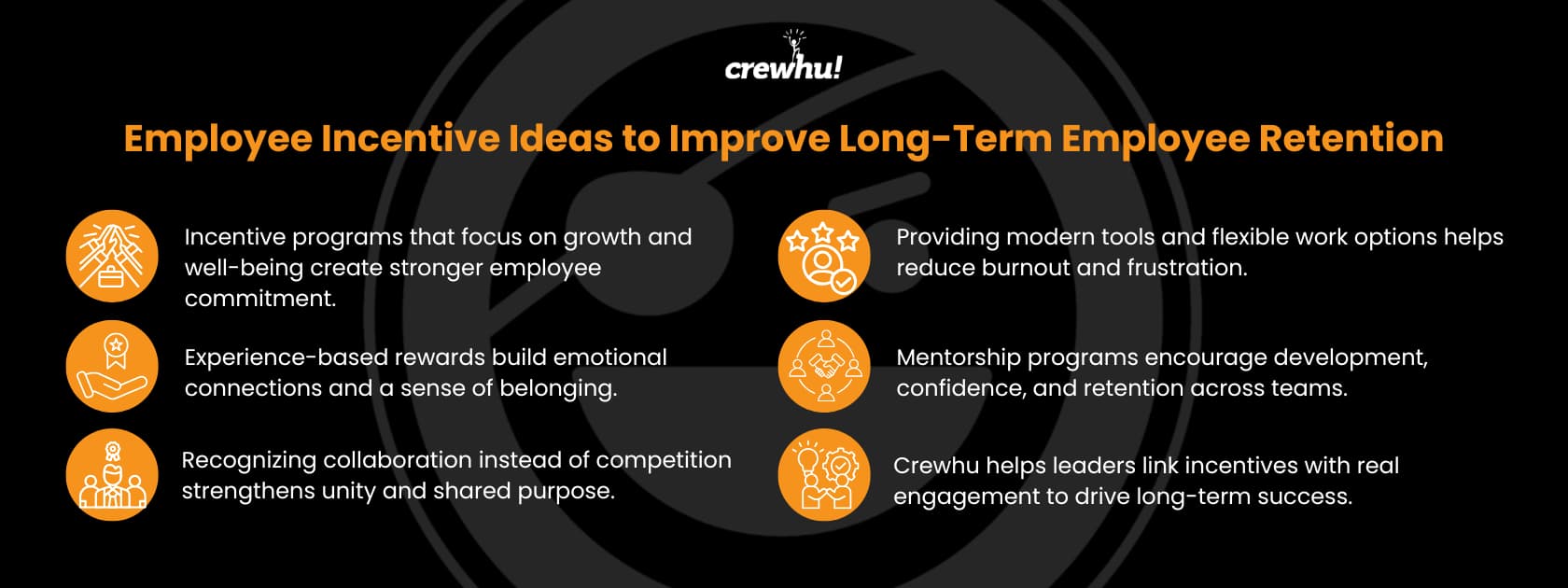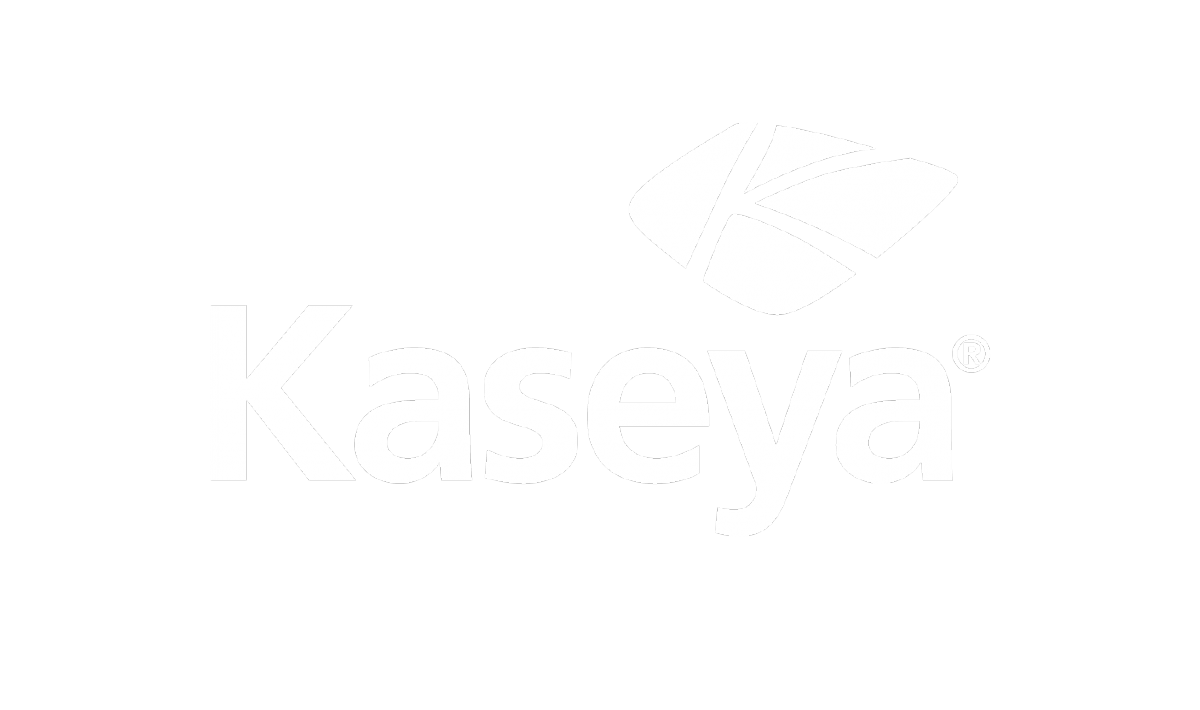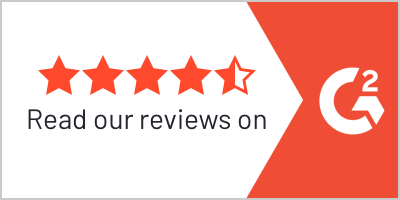Employee Incentive Ideas to Improve Long-Term Employee Retention
Build incentives around career growth, not just output

One proven way to improve employee retention is by implementing thoughtful incentive programs. Research from the Incentive Research Foundation reveals that companies with well-designed incentives can boost employee performance by up to 44%, demonstrating how recognition and motivation synergize to drive results.
When employees feel genuinely appreciated and supported, they bring greater focus, energy and commitment to their roles. Incentives that promote growth, purpose and well-being go beyond surface-level rewards. They show that the company truly values its people. Below are practical incentive ideas that can help you improve employee retention for the long term.
Build incentives around career growth, not just output
If your company focuses solely on rewarding short-term results, you may be missing a significant opportunity to foster long-term loyalty. Employees want to feel that they are growing, not just going through the motions.
Shift the focus from pure performance metrics to milestones that reflect development. Recognize employees who complete certifications, finish training programs, or take time to mentor others. These gestures show that the organization values personal and professional growth.
Celebrating progress helps employees feel supported and invested in the mission. This deeper connection leads to higher engagement, stronger loyalty, and a culture where people.
Offer the right tools and technology to simplify work
Providing modern tools and technology is one of the simplest yet most overlooked ways to improve employee retention. When employees have access to systems that streamline repetitive tasks, automate processes and support collaboration, they can focus on meaningful, high-impact work.
Outdated or inefficient tools, on the other hand, cause frustration and disengagement. For MSP teams managing multiple client environments, modern solutions such as AI-powered dashboards, integrated communication platforms, and automated reporting tools can reduce workload pressure and minimize errors. Examples include:
- AI-driven reporting and analytics systems
- Centralized project management platforms
- Automated ticketing and client communication tools
Investing in user-friendly, efficient tools demonstrates to employees that their time and productivity are valued. This type of support fosters trust, mitigates burnout, and helps create a workplace where people want to stay and thrive.
Offer flexible working hours
Modern employees value autonomy and work-life balance just as much as compensation. Giving team members control over their schedules through options like compressed workweeks, flexible start times, or hybrid arrangements communicates trust and respect for their individual needs.
Flexibility helps reduce burnout, boost productivity, and attract top talent who seek balance in demanding technical roles. It also supports diverse lifestyles and time zones, building a more inclusive culture that values results over rigid hours.
When employees feel trusted to manage their time effectively, they are more likely to stay loyal, motivated, and committed to long-term success.
Use experience-based rewards to reinforce belonging.
Cash bonuses can boost motivation in the short term, but they rarely build lasting loyalty. Experience-based rewards, on the other hand, create emotional connections that strengthen engagement and reinforce company culture.
Consider offering experiences such as paid team retreats, learning stipends, or charity day vouchers that align with employees’ personal interests and values. These rewards go beyond financial appreciation, recognizing people as individuals rather than just employees.
Shared experiences also rebuild social bonds, especially in remote or hybrid teams. Activities such as volunteer days, adventure outings, or cultural workshops encourage collaboration and unity beyond daily routines. When you prioritize experiences over material rewards, you strengthen both belonging and purpose, which are essential for long-term retention and motivation.
Make well-being as a reward program.
A healthy workforce is a loyal one. Well-being incentives, such as mental health stipends, fitness memberships, flexible scheduling, and mindfulness programs, demonstrate that leadership values employees as individuals, not just contributors to productivity.
This approach is critical given that 77% of employees report experiencing burnout at their current job. Those who feel supported in their well-being are far more likely to stay and thrive.
Tailored wellness incentives, such as additional time off for achieving wellness goals or participating in stress management programs, help reduce fatigue and enhance resilience. By prioritizing care and trust, organizations build long-term retention on a foundation of genuine support and respect.
Provide mentorship
Mentorship opportunities are among the most effective ways to strengthen engagement and retention. Providing employees with access to experienced mentors offers guidance, encouragement, and a clear sense of growth within the organization.
Mentorship bridges skill gaps, supports development and fosters belonging by connecting crew members across levels. It also shows that leadership is committed to long-term employee success rather than just short-term performance.
Make mentorship impactful by:
- Matching mentors and mentees based on shared goals or career paths
- Encouraging regular check-ins that focus on professional and personal development
- Recognizing mentors who demonstrate strong support and leadership
Beyond skill-building, mentorship nurtures trust, collaboration, and confidence. It transforms everyday working relationships into genuine partnerships for success, helping employees feel valued and motivated to stay and grow with the organization.
Reward collaboration, not competition
Many incentive systems focus heavily on individual accomplishments. While this can improve short-term performance, it often weakens teamwork and reduces overall engagement. Shifting the focus toward collaborative performance rewards helps strengthen cooperation across departments and teams.
Consider implementing peer-nominated awards for teamwork, shared bonuses tied to customer success metrics, or recognition for teams that create innovative solutions. These types of rewards celebrate joint effort and shared outcomes.
When collaboration becomes part of the reward structure, employees feel connected to a common purpose rather than isolated by individual goals. This unity builds long-term loyalty and a stronger, more cohesive workplace culture.
Implementing strategic retention with Crewhu
Incentives alone may attract talent, but culture is what keeps people committed. That’s where Crewhu truly stands out. Its recognition and feedback platform helps organizations turn everyday interactions into meaningful connections that link incentives to growth, purpose, and engagement.
From celebrating milestones to tracking engagement trends and spotting early signs of disengagement, Crewhu provides the tools to go beyond rewards. It empowers leaders to build a culture where employees feel seen, valued, and motivated to give their best every day.
Ready to take the next step? and see how your organization can transform employee incentives into lasting engagement and long-term retention.
Topics: smart goals, recognition award, employee retention







